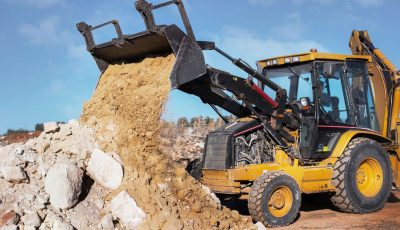Customs wants to become region’s K9 training center anew
Work is now underway to make the CNMI’s Customs Services Division become a drug-detector dog training center in the region once again, according to Customs director Joe Mafnas.
Mafnas said this as Customs held a mock demonstration at the airport on Friday to show how two of its three new drug-detector dogs, with their handlers, sniff through arriving passengers and luggage for illegal drugs.
“We’ve done it before, we can do it again,” Mafnas told Saipan Tribune. “But I would like to point out that we need to take care of the CNMI’s needs first, before opening it up to other areas that also need training.”
Mafnas, who revived the K9 program last year upon his reappointment as Customs director, said once the program is able to meet all the expectations to meet local needs, then it will start accepting K9 and handler training applications from American Samoa, Guam, and other island territories, just like years back.
The CNMI Customs’ Pacific Region Detector Dog Training Center was once touted as a “model” in the Pacific.
On Friday, Customs Lt. Jesse Atalig, the only certified senior instructor for drug-detector dog handling in the CNMI, led a mock demonstration of how drug-detector dogs and their handlers check arriving passengers and their luggage.
The demonstration showcasing two of three new drug-detector dogs was supposed to be for Gov. Eloy S. Inos and Finance Secretary Larrisa Larson but they were not able to show up because of meetings on Capital Hill. Customs, however, proceeded with the scheduled mock demonstration for the media.
The mock demonstration showed Customs detector dog specialist John Pangelinan with a 16-month-old Labrador named “Ben” going through a customs lineup of passengers and their luggage.
Another demonstration involved drug-detector dog specialist Nokki Saralu with 14-month-old Labrador named “Charlie.”
Both dogs were able to point to their handlers the passengers/luggage with the illegal drug “ice.”
Pangelinan said “Ben” is the second K9 he has closely worked with, as Customs replaced three of its aging drug-detector dogs.
“When you train and work with different dogs, you become a much better handler. And these new dogs are much younger than the ones we used to have,” Pangelinan said.
Two of the new dogs arrived weeks back, while the third one arrived on Saipan only last week from Florida.
Each dog costs about $10,000, including shipment to Saipan.
“We are looking at acquiring more dogs for the Saipan operations,” Mafnas said.
Customs’ drug-detector dogs are used not only at the Saipan airport, but also at the seaport and the post office.
Mafnas said the dogs also assist the Department of Public Safety and other local and federal law enforcement agencies.
The CNMI Customs K9 Unit was idled for over a year starting in June 2012 due to lack of funds and of certified drug-detector dog handlers. When the governor brought Mafnas back to Customs, the latter revived the K9 Unit in 2013. A year after the program’s revival, it replaced its three aging dogs with younger ones to further beef up border security.
Mafnas said the dogs that were decommissioned were put up for adoption.
The use of drug-detector dogs is an added tool to detect drugs in incoming passengers, luggage, cargoes, and post office packages, complementing manual checks by Customs personnel at ports of entries.



























